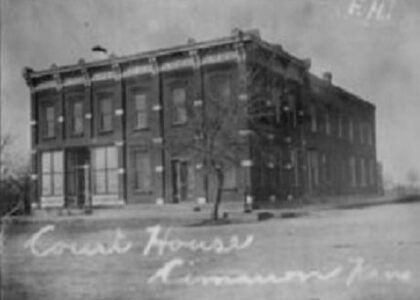Welcome to the fascinating world of the Marland Mansion, a testament to the opulence and ambition of the 1920s oil boom. Nestled in Ponca City, Oklahoma, this architectural masterpiece is a vivid reminder of the era’s grandeur. Built between 1925 and 1928, the mansion was the brainchild of E.W. Marland, an oil baron and philanthropist who once controlled 10% of the world’s oil reserves. Designed by the esteemed Tulsa architect John Duncan Forsyth, the mansion draws architectural inspiration from the Palazzo Davanzati in Florence, Italy.
The Marland Mansion, often referred to as the ‘Palace on the Prairie,’ spans a breathtaking 43,561 square feet and boasts 55 rooms, including 10 bedrooms and 12 bathrooms. The mansion’s design is a remarkable blend of Mediterranean Revival style with local craftsmanship, as it was constructed using light-colored limestone blocks quarried right on the site.
Throughout its history, the mansion has witnessed various transformations. Initially a private residence for Marland and his family, it has since evolved into a public museum, offering a window into the past for visitors from all over the world. In 1973, it was rightly designated as a National Historic Landmark, cementing its place in American history.
The mansion’s grandeur extends to its interiors, which feature custom-made wood entrance doors from New York, and intricate wrought iron grill work on its windows. Notable are the sculptures of Marland’s hunting dogs, carved by Italian artist Ernest G. Pellegrini, that guard the entrance, adding a personal touch to this majestic abode.
E.W. Marland himself was a larger-than-life figure. Not only did he make a significant impact in the oil industry, but he also served as a Congressman and Governor of Oklahoma. His legacy is palpable in the mansion, which stands as both a symbol of his personal success and a historical artifact of the American oil boom.
As you gaze upon this grand residence, imagine the lavish parties, the political discussions, and the daily life of one of the era’s most influential figures. Each room, each hallway, and each piece of decor tells a story of ambition, prosperity, and the indelible marks left by those who walked its halls.





